Skype is (still) the best communication app for Windows 10 users, even if people don't use it
Almost everyone I know has a Skype account, but pretty much no one uses it to message people.
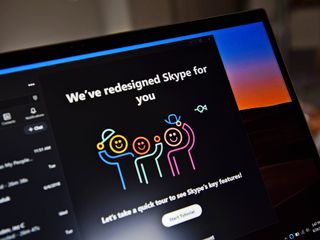
Updated February 6, 2020: This post has been updated due to the current health crisis. We've added some links to resources that can help people stay in touch right now and some thoughts on Skype as a service during the crisis.
My phone and PC have entire sections dedicated to messaging apps. I use WhatsApp, Telegram, Facebook Messenger, Slack, and more to stay in touch with people. I occasionally also use Discord, SMS messaging, and even Twitter messaging because people I know are on so many different platforms. But something stuck out to me recently, almost every single person I communicate with on any of these services also has a Skype account. And yet, almost none of us use it to message each other. Apple users have a seamless experience with iMessage and FaceTime. But I've found myself jumping from app to app every day for years on Windows because no one can agree on which service to use.
I'd imagine that many people are in the same boat right now when it comes to jumping between services. With millions of people working from home and locked down, people have scrambled to find a service to stay in touch with friends and loved ones. Many have switched over to Zoom, though that has security concerns right now, while others stuck with services like WhatsApp and Facebook Messenger. During the current health crisis, I was perplexed that no one I know even talked about using Skype. Microsoft says Skype usage is up, but in both raw numbers and anecdotally, people aren't flocking to Skype like they are to some other services.
Every single person that has a Microsoft account technically has a Skype account. And hundreds of millions of people have used Skype at least once or twice to make a video call, so, oddly, most people rarely use Skype. I switched over to Skype for my primary messaging app while on vacation a few months ago to see how it performs as an all-in-one communication app. I was pleasantly surprised. I've been critical of Skype in the past, including some of the app's design features. But the current state of the app is impressive and provides something I can't get with any other messaging services: a complete communication experience available on every platform I use. I think the insights I learned during this vacation apply even more so during the current crisis. I also still believe that Skype could be an excellent tool to stay in touch right now, but that most people don't use it.
If you're looking for resources to work or study from home, make sure to check out our Work From Home section.
Communicating from everywhere
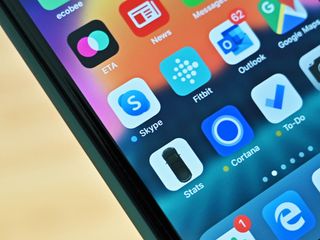
The reason I was inspired to switch over to Skype was my hunt to find a single app that allows me to communicate through text, voice, and video from all of my favorite platforms. I didn't want to jump between multiple apps when chatting with the same person. I've used Telegram for a long time and think it's an excellent service, but its lack of video calls made it fall short for my vacation away from my wife and dogs. Skype's gone through quite a few design changes, not all of which were well-received. But the current state of Skype is easy to use and works well for chatting, calling, and video calling.
Skype also delivers one of the best Windows 10 experiences among popular messaging apps. WhatsApp requires syncing through your phone and lacks many essential app features. Facebook Messenger has a Windows 10 app, so that's something, but it's clearly a port and lacks the features and polish of native UWP apps. Telegram has both a first-party Windows app and an excellent third-party app in Unigram, so it delivers an excellent Windows 10 experience. I usually wouldn't credit a platform for a third-party app, it's not like Google should get credit for myTube, but the makers of Telegram actively promote third-party applications and provide code that helps developers, so I think credit is deserved.
Get the Windows Central Newsletter
All the latest news, reviews, and guides for Windows and Xbox diehards.
The most important features of a messaging app vary from user to user, but the chart below breaks down the most important features to me as well as each service's availability.
| Category | Facebook Messenger | Telegram | Skype | |
|---|---|---|---|---|
| Text messaging | Yes | Yes | Yes | Yes |
| Voice calls | Yes | Yes | Yes | Yes |
| Video calls | Yes | Yes | No | Yes |
| Group calls | Yes | Yes | No | Yes |
| Screen sharing | No | Yes | No | Yes |
| iOS app | Yes | Yes | Yes | Yes |
| Android app | Yes | Yes | Yes | Yes |
| Windows 10 app | Yes | Yes | Yes (Windows app + Unigram) | Yes |
| Xbox app | No | No | Yes (Unigram) | Yes |
| Web-version | Yes (through syncing with phone) | Yes | Yes | Yes |
| Actionable notifications | Only on iOS and Android | Only on iOS and Android | Yes (Unigram for Windows 10) | Yes |
For the features that I care about the most, Skype is the only service that checks all of the boxes. It's one of only two messaging services here that supports text, voice, video, and group calls while having native apps on all of the major platforms. Facebook Messenger also does well, though I don't think it's Windows 10 app is very good.
How to easily set up a voice call or video meeting on Skype
Skype has handled just about everything I've done in my testing well. I chat with my wife all day, send photos and videos of my vacation, video call or call daily, and share files and my screen to help coordinate things while across the pond from each other. It's been nice to be able to jump between different forms of communication without switching apps and removes a lot of hassle when searching through histories.
Hello? Is anyone there?
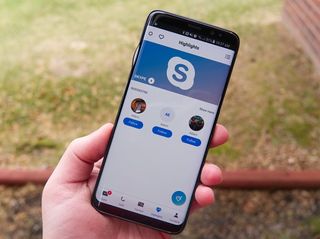
You probably noticed that my testing is primarily with my wife. That's because the biggest weakness of Skype is that almost no one I talk to uses it to chat. On multiple occasions, I've had a job interview on Skype and gotten a job, then immediately switched over to a different platform to talk to the same person. That's a pretty regular occurrence for Skype in my experience. Most people have it and will use it if specifically requested, but it's not the platform of choice. It used to be the default for video calls and still is to some extent, but overall, it's not the de facto communication experience.
So, here I am, asking my mom and dad to swap over to Skype for our family group chat because it works well on all of our devices. My dad has an iPhone, my mom has a Galaxy 10e, we all have Windows 10 PCs, and both households have an Xbox One. That makes Skype an excellent platform for our family, but is it worth me recruiting over my friends, teammates, and colleagues over to Skype? I'm not planning on converting the football team I coach over to Skype, even though I'm willing to bet 90 percent of them technically have a Skype account. Most people have picked their platform of choice and will stick with it.
Overall thoughts
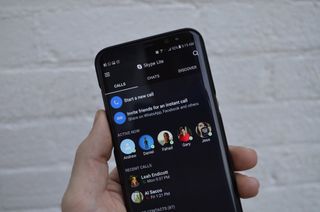
Skype is in a unique situation. It's a service that hundreds of millions of people have an account for that is often overlooked for competitors like WhatsApp and Facebook. As a communication platform, I think Skype provides the best experience for Windows 10 users out of the popular messaging services. It has apps just about everywhere, supports all types of communication, is free and easy to use, and has a good Windows 10 app. But I don't expect it to become the primary messaging app for many people.
It's almost sad to switch over to Skype. I think if Microsoft had marketed Skype differently and fixed its issues a few years ago, it could have been the default web-based communication app over Facebook and WhatsApp. But the fixes and improvements are likely too late, and people shouldn't have to beg or convert their family and friends over to an app to get a good experience.
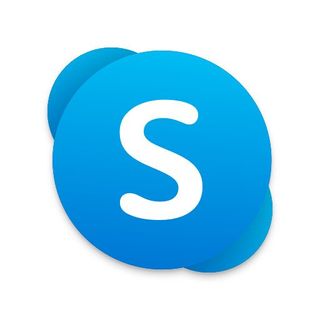
Versatile messaging
Skype has apps on every platform and supports every kind of communication, including text, voice, and video.

Sean Endicott brings nearly a decade of experience covering Microsoft and Windows news to Windows Central. He joined our team in 2017 as an app reviewer and now heads up our day-to-day news coverage. If you have a news tip or an app to review, hit him up at sean.endicott@futurenet.com.
